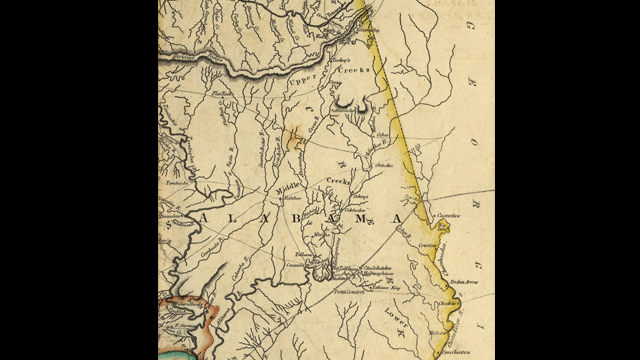March 24, 1832
The U.S. government and the Creek Nation signed the Treaty of Cusseta in Washington, D.C. In the treaty, the Creek Nation ceded its remaining 5 million acres in Alabama in exchange for about $350,000 and land claims for any Creek wishing to remain in the state. The agreement followed a series of state and federal laws passed to undermine the authority of Native Americans and to encourage their emigration west, including the Indian Removal Act of 1830. Creek landowners received about 2 million acres in land claims, but many of them quickly lost the land to swindlers and illegal squatters.
Read more at Encyclopedia of Alabama.

Portrait of Creek chief Ledagie. (McKenney & Hall, Library of Congress Prints and Photographs Division)

Portrait of Creek chief Yoholo-Micco, c. 1838. (John T. Bowen, Library of Congress Prints and Photographs Division)

Portrait of Creek chieft Tustennuggee Emathla. (McKenney & Hall, Library of Congress Prints and Photographs Division)

Portrait of Creek chief Se-loc-ta. Platefeatured in the History of the Indian tribes of North America by Thomas L. McKenney and James Hall. (Library of Congress Prints and Photographs Division)

Portrait of Creek chief Opothle Yoholo in traditional dress from painting by Charles Bird King. Print featured in the History of the Indian tribes of North America by Thomas L. M’Kenney and James Hall. (Library of Congress Prints and Photographs Division)

Portrait of Creek chief McIntosh, 1838. (McKenney & Hall, Library of Congress Prints and Photographs Division)

Clement C. Clay was governor of Alabama from 1835-37. Prior to becoming governor, he was a member of the Alabama territorial council, a state court judge, the first Alabama Supreme Court chief justice, and a U.S. congressman representing Alabama. (Photograph by Julian Vannerson, Library of Congress Prints and Photographs Division)
For more on Alabama’s Bicentennial, visit Alabama 200.













